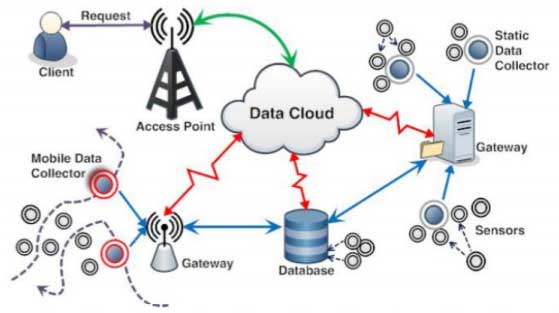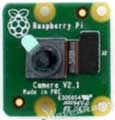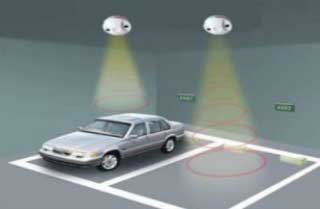发布日期:2022-04-28 点击率:57
A smart parking system entails an IoT-based system that transmits data about free (and occupied) parking places through a wired or wireless system via the web or mobile application. The IoT-device, incorporating a controller and multiple sensors, would be spread across multiple individual parking spaces. Users would enjoy a live update of available parking places and select their convenient space.
The system comprises of sensors, gateway, and data cloud. The generated data from a particular location is passed to the gateway, which in turn passes it over to the access point where the user can access it. The gateway manages the data within its network and the access points are maintained by various service providers. The data from sensor networks is shared by mobile device users.

Vision systems are based on digital sensors embedded within industrial cameras and optics, specialized for acquiring images. The integrated hardware and software process analyses and measures different attributes to give a meaningful result.
The Raspberry Pi V2 camera performs automatic control functions with high-performance OmniBSI technology (high sensitivity, low cross talk, and low noise). As mentioned before, it identifies automobile license plates, when the presence of a vehicle is detected in the parking space.

The radar sensor-generates 2D images with the help of artificial intelligence and can substitute video cameras. The trained neural network synthesises the images and the parking lot status is shown as a result. These sensors offer the option to use one powerful device to cover multiple vacant parking slots.
These sensors use the surrounding magnetic field to identify large metallic objects such as vehicles. For example, sensors collect information to create a demand profile for parking lots, where greater prominence is provided to occupied parking lots (checked) compared to the vacant ones. Magnetic loop detectors are similar to magnetometers, the difference being that the magnetic field is altered when objects pass through the loop and are consequently detected. It comes fitted with RFID so an on-street parking reservation can be performed
Infrared sensors measure the distance between two objects. When an object comes closer to the sensor, the infrared light from the LED reflects off the object and is traced by the receiver. The infrared sensor uses light, so any object in front of the sensor may lead to false detection.

Mobile phones, now enmeshed in people’s lives, are being widely used in smart parking systems. Almost all contemporary mobiles have a QR code scanner integrated into the camera. When scanned, purpose-built QR codes help users find their respective parking spaces. The information is then dispatched to the solution’s server to update the status. The system permits users to easily acquire their vehicle locations in case they need to do so.
These sensors emit sound waves on a pre-determined frequency and measure the distance between themselves and the object that stands in the wave path. The effectiveness and precision of this technology has led to its adoption in many smart parking solutions. These sensors are employed to detect whether a parking lot is free or occupied (parking status). During research studies, different types of technologies were used to transmit and process sensor-generated data. For instance, a sensor was placed on a pedestal, and data sent to a Raspberry Pi via Wi-Fi. Another solution involved the use of a cable connected to an Arduino processor, with connection to an XBee network. It is possible to connect a sensor to an HTTP server that verifies parking lot availability. Similarly, yet another solution proposed the use of an Xmesh wireless network. Continuous technology advancements have spurred new implementations that involve LPWAN technologies such as LoRa. The latter connects sensors for transmission of parking space status.
Ultrasonic sensors are implemented one-to-one. It means one sensor is in place for every parking slot. Additionally, it is important to mention that these low-cost sensors have high detection accuracy.

Networking can be implemented using WiFi, Bluetooth, mobile communication technologies, or wireless IoT protocols, with occasional implementation as ZigBee, LoRa, or NB-IoT.
The wireless IoT protocols and WiFi technologies are preferred for sensor communication, compared to 3G and 4G technologies. However, to reach the end-user, any technology that provides internet access may be used.
The sensors are selected based on detection autonomy, ease of installation, and sensor cost. Detection autonomy is the ability of a sensor to determine by itself if the slot is free or occupied. For example, cameras need extra elements for processing, whilst ultrasonic sensors can detect instantaneously. The phrase "ease of installation” refers to the action of placing a sensor anywhere, with the occasional placement in complex infrastructures like structured cabling, electrical connections, and aerial gutters. Other sensors only require being buried underground.
This table intends to guide readers to select a sensor based on the described conditions and as a part of smart parking solutions. The following figure shows a comparison between various sensors.
| Sensor Type | Ease of installation | Invasive | Detection Autonomy | Cost |
|---|---|---|---|---|
| Camera | No | No | No | Moderate |
| Smartphone sensor | Yes | No | Yes | Low |
| Ultrasonic | No | No | Yes | Moderate |
| Magnetometer | Yes | No | Yes | Low |
| Infrared | No | No | Yes | Low |
| Radar | Yes | No | No | High |
| RFID | No | Yes | Yes | Moderate |
下一篇: PLC、DCS、FCS三大控
上一篇: PLC design in Automa